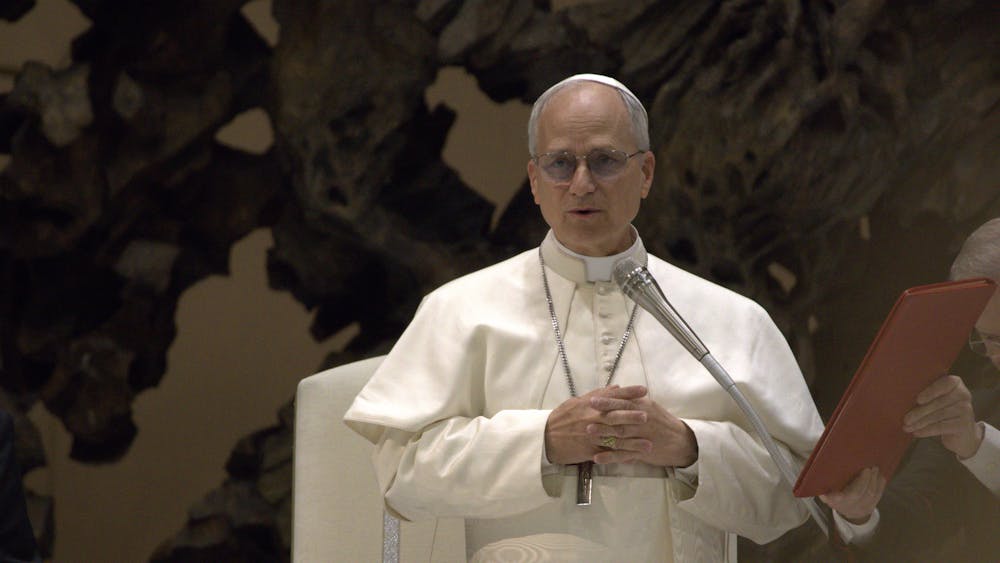
On Thursday, the University announced it admitted 1,737 students to the class of 2026 in the regular decision process. In December, 1,675 students were admitted in the restrictive early action (REA) cycle. In total, 3,412 students were admitted out of 26,506 applicants. The University set a record-low acceptance rate of 12.9% this year, replacing last year’s record-low of 14.6%.
Of the 1,598 students deferred in the REA process this year, 145 were ultimately admitted in the regular decision process. The University received a record number of applications and 12% more applicants than last year.
Associate vice president for undergraduate enrollment Don Bishop said in the past two years, applications have increased by 25%.
“That is an enormous gain, but at the same time, we’re looking for the same attributes,” he said. “We consider ourselves to be different than the other top 15 schools, and our admissions approach embraces that difference … we certainly are going after the most intellectually driven, academically talented students, but we really look at their creativity and motivation for learning, not just their ability to create academic results.”
This year, 3,046 students were waitlisted in the regular decision process. Last year, Bishop said 107 waitlisted students were eventually admitted. He said that each year, the initial number of students the admissions team admits is designed to allow for some students on the waitlist to eventually be admitted as well.
“The quality of the pool that we’ve admitted is so high that competition for them is exceptional,” he said. “A lot of students get into the other top schools in America, so those that really believe in the mission of Notre Dame will pick Notre Dame. Others … they’ll go to another school, and that’s fine because that leaves that spot open to a student who is equally qualified and really wants to go to Notre Dame.”
Students from 8,740 high schools applied, and 2,198 high schools are represented among admitted students. Admissions data showed that 47% of admitted students come from public schools, 33% from Catholic schools and 19% from non-Catholic private schools. Bishop said all 50 states, as well as 95 countries, are represented among admitted students. 18.7% of admitted students are international students, U.S. students living abroad or have dual citizenship.
The admitted student cohort is also made up of 41% U.S. students of color — specifically 15% Hispanic and Latino students, 14% Black students, 11% Asian and Pacific Islander students and 1% Native American students. First-generation college students make up 14% of the admitted class. Bishop said that while the University is still reviewing financial aid applications and therefore does not yet have an official figure on the number of low-income students in the class of 2026, he estimates based on current and past data that 20 to 22% of the class will be Pell Grant recipients, first-generation or from a family with an annual income below $65,000. Bishop also estimates 18 to 20% of the class of 2026 has at least one parent who graduated from Notre Dame.
This is the second year Notre Dame implemented the test-optional policy which allows students to elect whether to include scores from standardized tests like the ACT and the SAT on their application. Bishop said about 50% of applicants did not provide a standardized test score and 33% of admitted students did not provide one. He said he believes the test-optional method is a benefit to Notre Dame because it attracts students who are high achievers in the classroom but would have in the past felt deterred from applying due to a low test score.
“We also have more high-performing students who probably come from lower-income [families] because testing is still unfortunately highly correlated with income,” Bishop said. “Higher-income [families] have a lot more resources to prep their students to take those tests.”
The University will continue the test-optional policy next year, Bishop said, and then reevaluate to determine whether to continue it going forward.
Director of undergraduate admissions Christy Pratt said she believes the test-optional policy along with the University’s ability to hold in-person tours and recruitment events contributed to the record number of applicants.
“The fact that Notre Dame remained open for in-person instruction during the pandemic has been a great thing for our applicant pool, students and families,” she said. “We were able to start doing information sessions and tours in person beginning in late June of 2021 … that was greatly appreciated by students and families.”
Bishop said there is space for 2,050 admitted students to enroll in the incoming class. Students have until May 1 to make their decision and submit their enrollment deposit. The University will host Admitted Student Days April 10-11 and April 24-25 where students can learn more about different academic programs, clubs and student life opportunities, tour the campus and meet current students and faculty members.
"In the admissions process, we look for students who want to give more in their lives than what they intend to get or take,” Bishop said. “There’s a certain generosity, a certain spirit. We’re very proud of the class that applies to Notre Dame and gains admission every year.”
University admits 3,412 to class of 2026 from record number of applicants
Makayla Hernandez
Admission statistics for the Class of 2026 reveal the most competitive Notre Dame application cycle to date.









